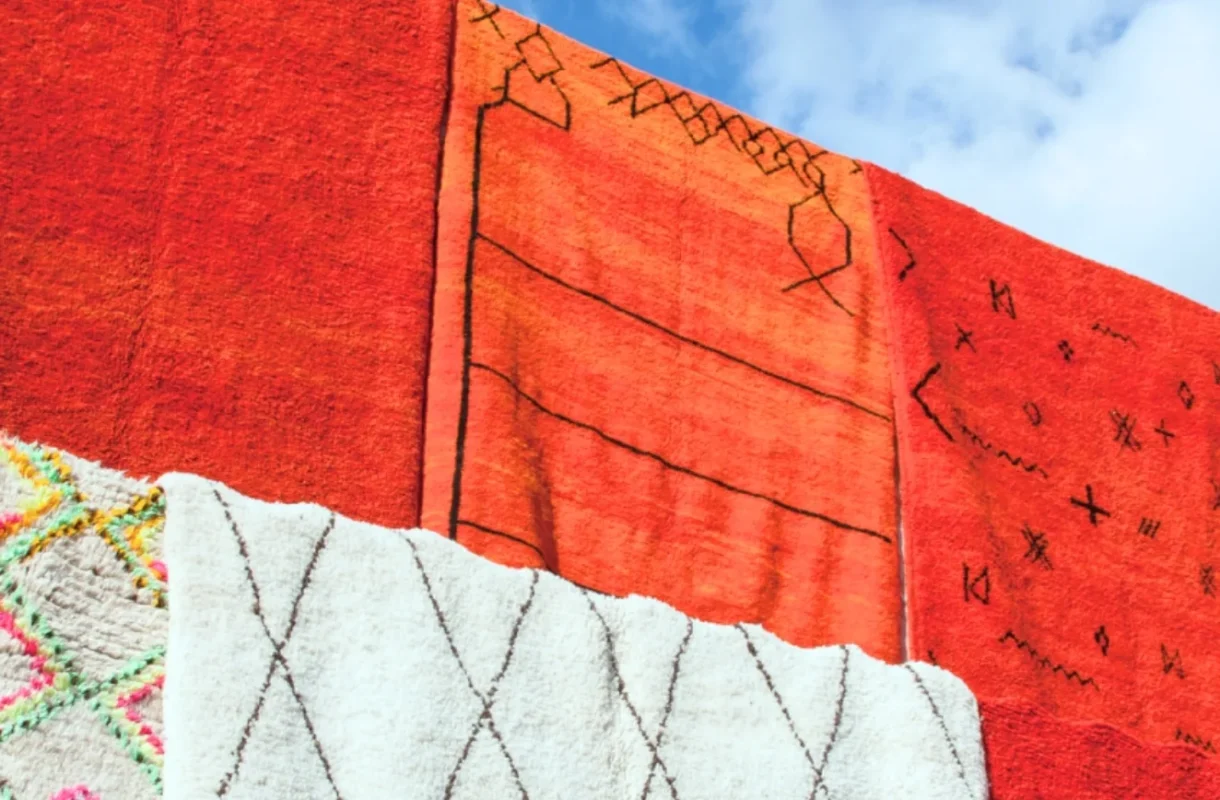No products in the cart.
Buying Guides
Why Are Moroccan Rugs So Expensive?
Moroccan rugs are admired worldwide for their beauty, quality, and cultural richness. But if you’ve ever shopped for one, you might have wondered: Why are Moroccan rugs so expensive? In this post, we’ll explore the main reasons behind their price and why they’re worth every cent.
Handmade Craftsmanship
One of the biggest factors influencing the price of Moroccan rugs is the handmade craftsmanship behind each piece. Unlike machine-made rugs, Moroccan rugs are woven by skilled artisans, often Berber women, who spend weeks or even months creating a single rug.

This labor-intensive process involves intricate hand-knotting or weaving techniques passed down through generations. Each knot is tied individually, ensuring unique patterns and exceptional quality.
Natural High-Quality Materials
Moroccan rugs are made from premium natural materials, primarily sheep’s wool. The wool is often sourced locally, hand-spun, and sometimes naturally dyed using traditional methods.

Using natural fibers contributes to the rug’s softness, durability, and warmth, but it also increases production costs compared to synthetic alternatives.
Unique and Symbolic Designs
Each Moroccan rug tells a story. The designs are more than decorative—they represent cultural symbols, tribal history, and local traditions. This cultural significance adds intangible value that mass-produced rugs cannot replicate.

Because of their unique patterns and meanings, Moroccan rugs are considered works of art, which justifies a higher price.
Time-Consuming Production
Creating a Moroccan rug is a time-consuming process. Depending on the size and complexity, some rugs take months to complete. This long production time reflects in the final price.

The patience and dedication needed to complete each rug ensure high quality and authenticity, which mass production cannot match.
Secondary keywords: time to make Moroccan rugs, rug weaving process, artisan rug making
Limited Supply and High Demand
Moroccan rugs are handcrafted in limited quantities. Unlike factory-made rugs, you won’t find identical copies everywhere. This scarcity drives up the value.
Meanwhile, global demand continues to grow as Moroccan rugs become increasingly popular in interior design, especially for bohemian, modern, and rustic styles.
Durability and Longevity
While Moroccan rugs can be expensive upfront, they offer exceptional durability. When cared for properly, these rugs can last for decades and even improve in character and softness over time.
This longevity makes them a valuable long-term investment for your home.
How to Spot Authentic Moroccan Rugs
To make sure you’re investing in a real, handcrafted piece and not a factory imitation, look for these key details:
- Hand-knotted or handwoven texture
- Use of natural wool and plant-based dyes
- Irregularities that reflect artisan handiwork
- Unique Berber symbols and patterns
Want to go deeper?
👉 Check out our guide on how to spot priceless tribal Berber treasures for tips on choosing the real thing with confidence.
Caring for Your Moroccan Rug
Proper care maintains your rug’s beauty and value. Regular gentle vacuuming, avoiding direct sunlight, and professional cleaning are essential.
If you own a Beni Ourain rug, check out our detailed guide on how to clean and maintain Beni Ourain rugs.
Conclusion
So, why are Moroccan rugs so expensive? The answer lies in their handmade craftsmanship, premium materials, cultural richness, time-consuming creation, limited availability, and long-lasting durability. These factors come together to make Moroccan rugs not just floor coverings, but timeless treasures worth investing in.
When you buy an authentic Moroccan rug, you bring home a piece of art, history, and tradition that will enrich your space for years to come.

